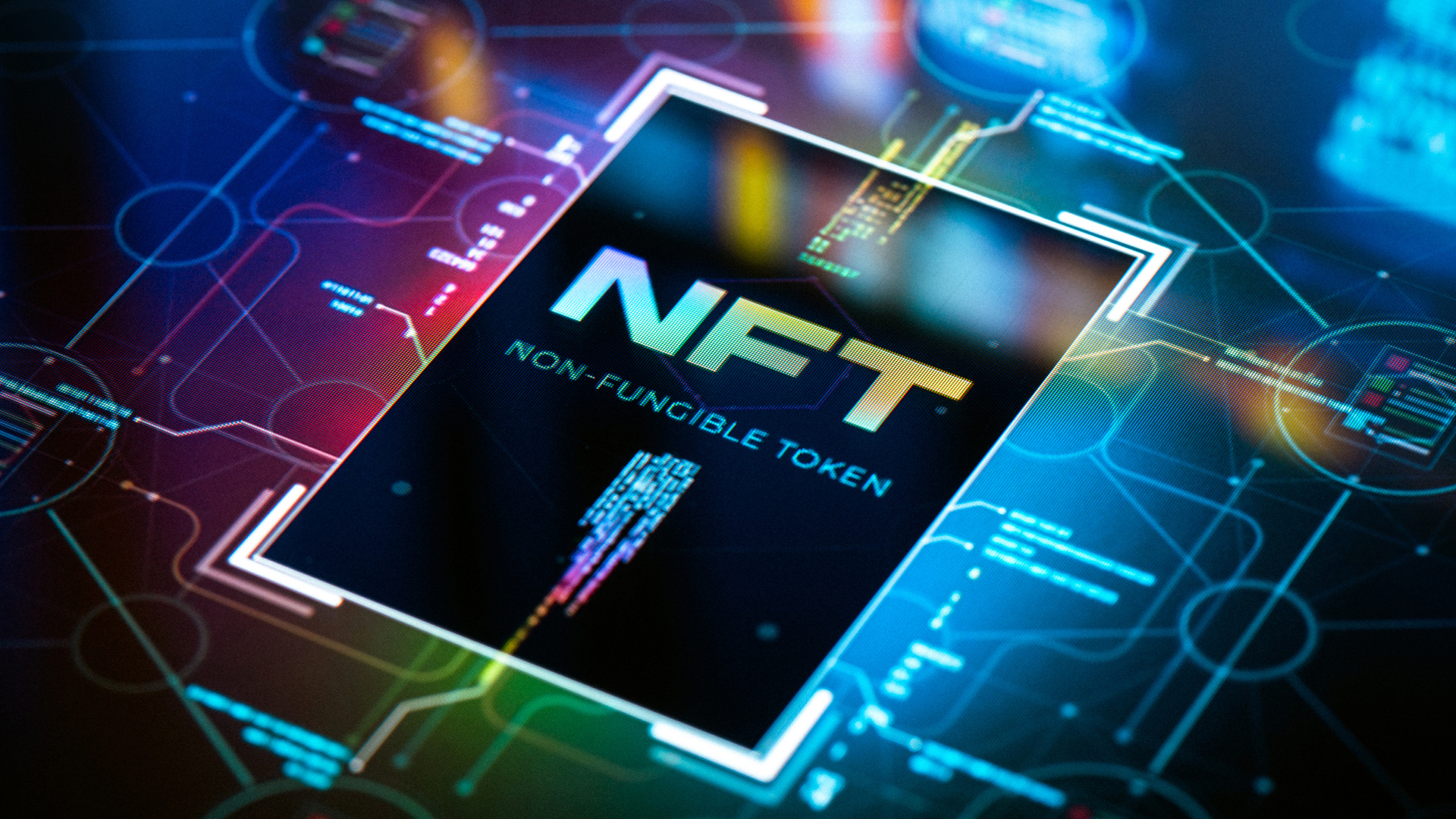How will NFTs change the way we do business? Leading blockchain expert Dr. Merav Ozair answers pressing questions on the NFT phenomenon, how it differs from traditional systems, looking beyond the hype and more.
Dr. Merav Ozair is one of the world’s leading experts on blockchain and cryptocurrency. She is the Editor-in-Chief of the World Scientific Series in FinTech at World Scientific Publishing and is writing a series of books on Non-Fungible Tokens (NFTs), DOAs, and DeFi. She is a professor at New York University and is a member of the International Association for Trusted Blockchain Applications (INATBA) established by the European Commission.
One of the hottest digital assets sweeping the world right now is NFTs, or non-fungible tokens, which were initially introduced in 2014. Though most people were unfamiliar with NFTs in early 2021, the market for this new asset is now expected to grow from USD $14.02 billion to USD $21.33 billion in 2022 and up to USD $82.43 billion by 2026 according to the Global Non-fungible Token Market Report 2022.
Major brands like Nike, Louis Vuitton, Gucci, and McDonald’s have jumped on this bandwagon as well, coming up with their own NFTs. Even the American restaurant chain Taco Bell launched a series of NFTs on the NFT marketplace, Rarible. These were GIFs that incorporated the company’s signature taco design, with profits from the NFT sales going to the Taco Bell Foundation.
Is it just a fad?
Though major organizations are exploring the world of NFTs, the question on everyone’s mind is whether this is just a trend that will soon die down, or if it is a new avenue in business worth investing in.
According to Dr. Ozair, the world is still experiencing the hype of NFTs, though it is on a decline.
She noted the sale of an NFT of the first tweet by Twitter co-founder Jack Dorsey which was initially sold for USD $3 million in 2021. The owner of the NFT tried to sell it recently for more than triple the original price. However, the highest bid he received was only just over USD $6,000.
This clearly demonstrates the risks within the NFT market, as well as the dwindling initial excitement. However, she also noted that the value and draw of an NFT, much like art, lies in its uniqueness. Mr. Dorsey’s first tweet is still available on Twitter for the world to see. So, the NFT of it may not hold as much value to potential buyers.
The value of an NFT is then determined by the market after all and the original buyer was unable to sell it for a higher amount as the market deemed it to be less valuable.
In comparison, the family behind the viral “Charlie Bit My Finger” YouTube video decided to mint an NFT of the video while also removing the original from the platform. That NFT sold for over USD $760,000 and the buyer is the only person who has a copy of the video as well as a certificate authenticating their NFT. The high price of the “Charlie Bit My Finger” NFT and lower resale price of the Jack Dorsey first tweet NFT was driven by people’s hype and market forces.
However, there is an NFT bubble – just like there was when the internet was first introduced,
Referring to the internet bubble, Dr. Ozair said: “There was a lot of hype. People bought into this hype and invested in all kinds of unrealistic startups that we don’t even know the names of today. They are lost and forgotten forever.”
“But there were a lot of those. And out of these thousands and hundreds of thousands that were batch experiments or scams or frauds or whatever you want to call it, there’s always going to be something that is very valid like Amazon.”
Similarly, Dr. Ozair posits that the same thing can happen with NFT. Once the fad dies down and many of the NFT-related ventures go bust, a few will survive and will be remembered as history.
“Beyond the hype are the business use cases,” noted Dr. Ozair.
The minting and monetizing of NFTs
What sets NFTs apart from a fungible token – like a $1 dollar bill – is the fact that NFTs are a unique token containing a smart contract that is not interchangeable in the same way that $1 dollar bills are.
“NFT is a smart contract, and in the smart contract, you put down there all the rules or the rights, or kind of documentation of the originality and authenticity of that asset, whether it’s digital or physical,” elaborated Dr. Ozair.
Rights of the creator to rights of the holder, transfer of ownership, monetization, royalties, certificate of authentication, and more can be contained within the smart contract of an NFT.
NFTs also cannot be copied since it is created on the blockchain and therefore has all the features of the blockchain. NFTs are immutable. They cannot be changed, forged, damaged, or deleted. An NFT is created with a timestamp that is authenticated and cannot be altered. So even if future iterations of the NFT are created, the original is still its own thing and cannot be changed even by the original creator.
This characteristic NFTs allows for potentially interesting uses in a business context apart from investing or buying art pieces.
“The power of NFTs is the authentication,” she said, adding “You can authenticate everything from digital assets to physical assets. So, it gives you a certification of authentication [to say] this is the original.”
In particular, NFTs could have a significant impact in the world of copyright and intellectual property.
NFTs for protecting intellectual property
“There is a lot of content out there that everyone has copied and downloaded. How do you protect that? How can you make sure that you’re getting the right royalties?” Dr. Ozair pondered, adding that she is experimenting with this herself.
For example, creating NFTs of her own content or audio files. Rather than investing or buying NFTs of art, using NFTs for content creation instead.
One example of a major organization that is dabbling is this IBM’s collaboration with IPWe, a Paris-based company that founded the world’s first global patent market, to create NFTs of intellectual properties (IP) or patents.
The IP or patent itself will be registered with the relevant governing body and officials as it traditionally would be. However, the tokenization of the IP or patent – making an NFT of it – can be done for monetization. When the NFT of a patent is sold, the stipulations regarding the rights and ownership of the patent are contained within the smart contract.
A creator who sells an NFT of their patent may allow the buyer to use the patent now that they have bought the NFT, but the actual patent rights remain with the creator. It is a way of both protecting the rights of the patent owner and allowing them a different avenue to monetize their patents.
The business use cases of NFTs in rights authentication could be endless.
Apart from intangible assets like IPs, there are also companies minting NFTs of tangible collector items such as bottles of liquor. The Block Bar mints NFTs of collectible liquor stored in a warehouse in Singapore. Each bottle has an NFT which can be sold and traded to anyone around the world without the bottle actually changing hands.
This works because of the smart contract which authenticates the bottle and ownership. It is a model that opens opportunities otherwise unavailable in a traditional system. Authenticating a bottle of single malt scotch without the actual bottle in a traditional system would be cumbersome and costly, involving attorneys and notaries.
On the other hand, an NFT which contains a smart contract that authenticates the physical bottle makes it an easier process to transfer and trade ownership of said bottle over time on a digital platform.
“Theoretically speaking, this concept of trading hands from one person to another verbally, because if it sits on a box, then anyone from all over the world can buy it for years. Until someone decides to have the actual bottle and open it up and crack it and then ‘burn’ the NFT, and it doesn’t exist anymore,” explained Dr. Ozair.
Scam or legitimate investment?
Of course, this then raises questions of legalities. The world of NFTs has been plagued by concerns over the decentralized nature of the asset and the lack of regulation by central banks. This is where many arguments lay about NFT scams.
The challenge here, according to Dr. Ozair, is understanding the structure and purpose of any single NFT on a case-by-case basis as not all NFTs function as securities.
For example, an art NFT is not a security in the same way that a physical piece of art is not. The NFT is merely a tokenization of a piece of art. Similarly, monetizing a piece of IP by minting an NFT of it does not make it a security. An NFT only becomes a security when it is fractionalized and traded as such.
It all depends on the structure and purpose of the NFT.
“There is no difference between what we have in our traditional system and the digital system. The fact that it’s digitized doesn’t change the concept of what it does,” Dr. Ozair explained.
However, she also noted that the current regulations on NFTs remain murky.
“As of now, we don’t know exactly what the status of NFTs is, but they have been traded over the world,” she said, adding that she is in discussions with US and European regulators as part of INATBA to try and understand and work with them on the different possible uses of NFTs.
“We’ve been working on proposals to submit to the EU, the European Commission, about the regulation of the entire space from defi (decentralized finance) to NFTs to DAO (decentralized autonomous organizations),” she elaborated.
Having said that, she assuaged concerns that NFTs could be a scam. Though it is inevitable that NFT-related frauds will crop up, Dr. Ozair noted that any investor should do their own research before making an investment as they would with any other type of asset.
Dr Ozair said: “You do your due diligence for any investment that you do anyway, so why not with NFT just because it’s a hype?”
All the information an investor would need is contained within the smart contract of an NFT, after all.
Careers in NFTs
With that in mind, Dr. Ozair also addressed the question of careers in NFT development and the relevant skills and knowledge that are required in this new field, both technical and non-technical.
From a technical perspective, Dr. Ozair notes that NFT developers must have the right skills to create smart contracts. As NFTs as essentially a token, and a token is a smart contract that needs to be coded, this is a skill that is essential for developers working in NFT.
There are also skills required from a business perspective.
“You have to think about what is the business use case? What is the problem that you identified and how do you want to solve it, and whether NFTs will be the right solution for that,” she explained.
Overall, as the novelty of NFTs begins to wear off, the potential impact it could have on fields such as intellectual property will be more evident as it is further explored. It is not so much a question of if NFTs make good business sense but how can businesses tap into the many potential uses of NFTs that suit their needs.








